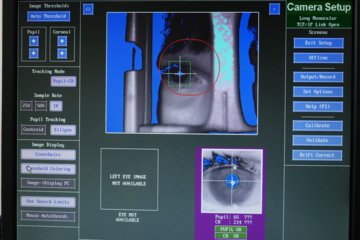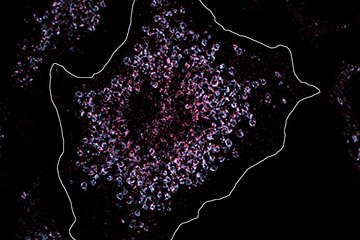“It was worthwhile to stumble into it”
Max Planck Medicine Nobel laureate Erwin Neher about the discussions leading up to the establishment of the European Research Council ERC
The Nobel laureate Erwin Neher of the Max Planck Institute for Biophysical Chemistry helped lay the groundwork for the European Research Council (ERC), which in the tenth year of its existence is regarded as an international model of a well-run research funding organization. In our interview, Neher talks about important turning points during the early years. They include a petition, without which everything might have turned out differently.

Mr Neher, you’re a researcher through and through. How did you get into the totally different field of research policymaking?
Erwin Neher: The initial push came indirectly by the President of the European Commission at the time, Romano Prodi, who announced in 2000 that the European Union should aim to become the greatest knowledge-based society in the world. My view was clear: such a knowledge base can only be created through basic research. As the member of the EURAB, the European Research Advisory Board, nominated by the Max Planck Society, I was directly involved from 2001 to 2004 in advising the EU Research Commissioner, Philippe Busquin, on how to secure the required support. So I’ve sort of stumbled into the whole thing.
So it was hard going ...
Erwin Neher: That’s right. After two years of work in the EURAB, I concluded that the existing instruments were beyond repair and that something entirely new was needed. The classical pattern of EU-funding was geared to industrial research, to the competitiveness of European industry, and not to facilitating totally new breakthroughs. Breakthroughs aren’t achieved if an authority decides what’s important for European science and industry and on that basis formulates projects, which researchers can then apply for. That would mean conducting research in the way a construction company sets about building bridges in Spain. Instead, it must be done exactly the other way around, for example at the national level as in the DFG and the British Research Council: The idea itself must be the deciding factor. The best idea, determined in a competitive process based on excellence criteria, opens doors to new knowledge. Establishing this concept at the EU level was indeed a milestone.
Was it hard to convey this change in perspective?
Erwin Neher: There were supporters as well as critics. The crucial point in the process was to maintain the focus on scientific excellence, thereby preventing notions of proportional representation from taking hold. As far as the best possible conditions for research are concerned, the scientific community was in agreement: The ERC should fund projects that come from science and are daring – meaning high risk – and only the criterion of excellence should be applied to the selection of those projects. What is generally seen as success criteria today was controversial at the time.
Was there a specific pivotal moment?
Erwin Neher: The ERC was a recurring topic of discussion in the EURAB, which directly advised the EU Research Commissioner in Brussels every few months. There was a situation when Philippe Busquin let it be known somewhat obliquely that the ERC was no longer on the list of projects that he wanted to implement during his term of office. So I took the initiative to start a petition, which was signed by 45 Nobel laureates. Armed with this list, we went to Brussels in October 2003, presented it to Busquin and had a very good discussion. We repeated that the following year, when the Slovenian Janez Potočnik assumed office. I believe this helped keep the idea alive. And Potočnik then supported the establishment of the ERC.
As President of the MPG, Peter Gruss also strongly advocated the ERC …
Erwin Neher: Yes, there were several MPG initiatives in support of the ERC, and the then president, Peter Gruss, was very committed. He was particularly concerned with the structure that the ERC should have. How can it be ensured that the ERC is as independent as possible? There were two models based on different EU regulations. A model was chosen under the aegis of the Commission, but one in which the ECR ultimately had the say at least in scientific decisions. Fotis Kafatos, the first chairman of the Scientific Council, and Ernst-Ludwig Winnacker, the first general secretary, were certainly instrumental in achieving this. And at the heart of it all was the make-up of the Council as a whole.
How so?
Erwin Neher: In a sense those 26 members defined the policy of the ERC. I was involved because I was appointed to the five-strong Identification Committee, which selected the Council members. We stipulated, firstly, that they must be first-class scientists, and, secondly, that they have relatively recent experience in active research. The Council members and the chair have since changed after serving their terms. But I think selecting the founders definitely had an impact on what the ERC is today. The ERC has, of course, many fathers, as is true of most successful ventures.
How would you rate the ERC today?
Erwin Neher: In view of the earlier EU research funding, the ERC is a major step forward for basic research. By securing the funding lines in its first years – beginning with the starting grants, followed by the introduction of the advanced or consolidator grants – the Scientific Council has covered a broad spectrum within a scientific career. Of course there is criticism of bureaucracy, as colleagues with ERC grants tell me. But by and large it is a very good programme that promotes leading-edge science. And needless to say, I’m glad to have a role in it.
The interview was conducted by
Jens Eschert












